33+ SAMPLE Safety Audit Checklist
-
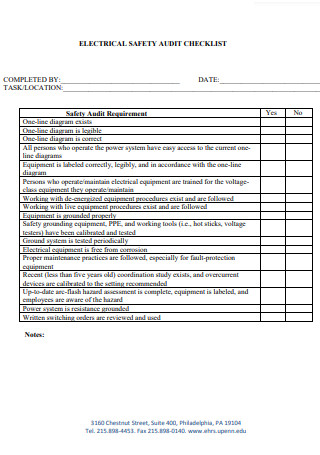
Electrical Safety Audit Checklist
download now -
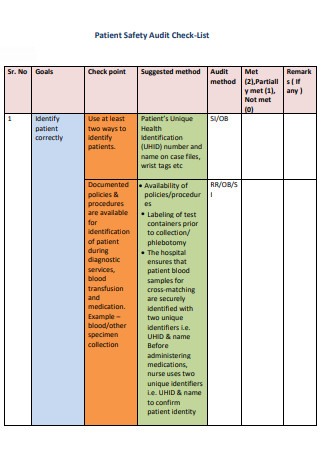
Patient Safety Audit Checklist
download now -
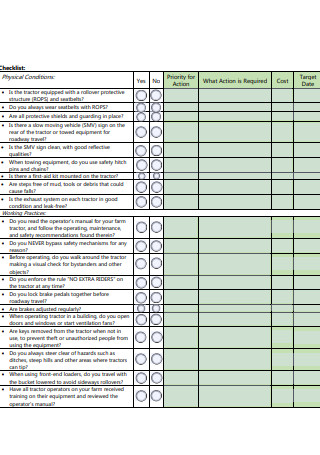
Farm Safety Audit Checklist
download now -

Electrical Safety Policy Self Audit Checklist
download now -
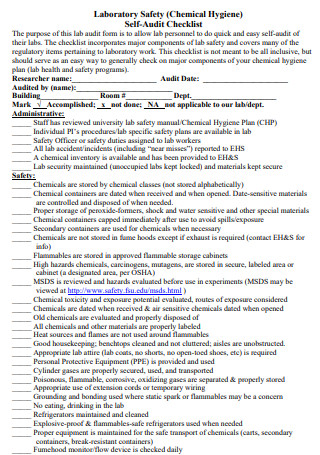
Laboratory Safety Self-Audit Checklist
download now -
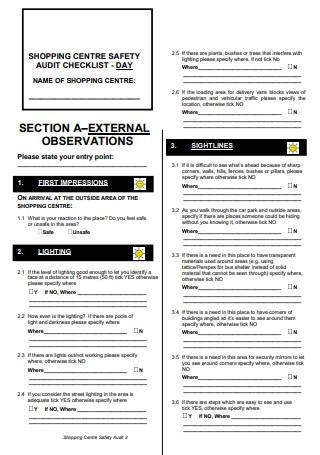
Shopping Centre Safety Self-Audit Checklist
download now -
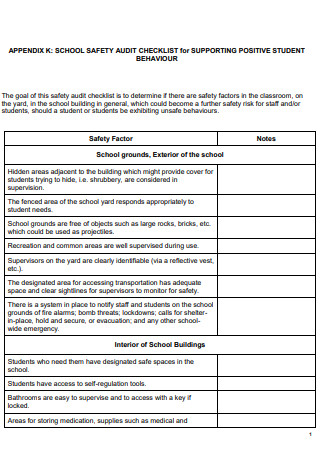
School Safety Self-Audit Checklist
download now -
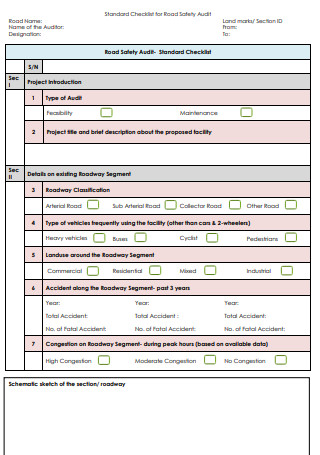
Standard Checklist for Road Safety Audit
download now -
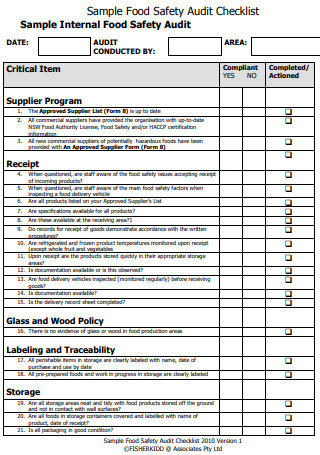
Sample Food Safety Audit Checklist
download now -
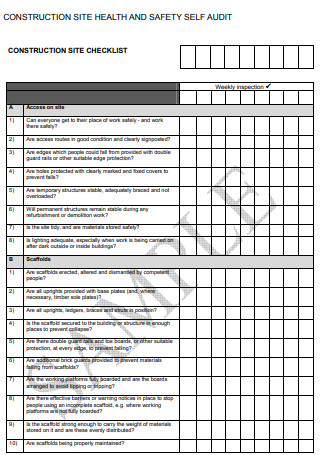
Construction Site Health Safety Audit Checklist
download now -
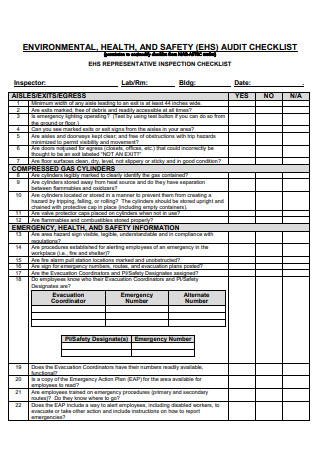
Environmental, Health, And Safety Audit Checklist
download now -
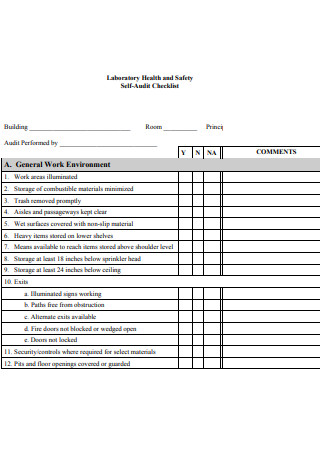
Laboratory Health and Safety Self-Audit Checklist
download now -
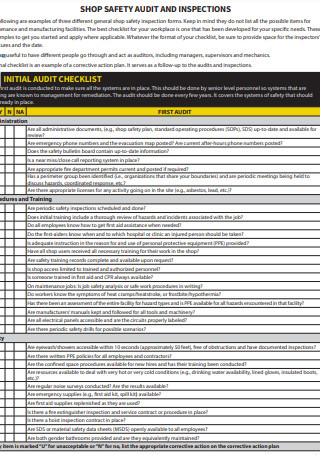
Shop Safety Self-Audit Checklist
download now -
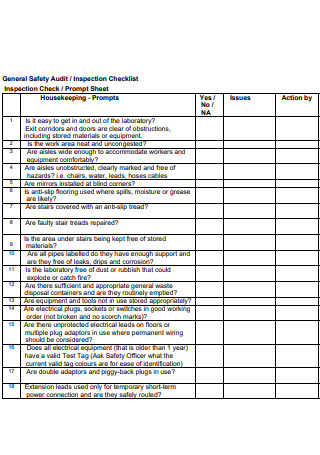
General Safety Audit InspectionChecklist
download now -
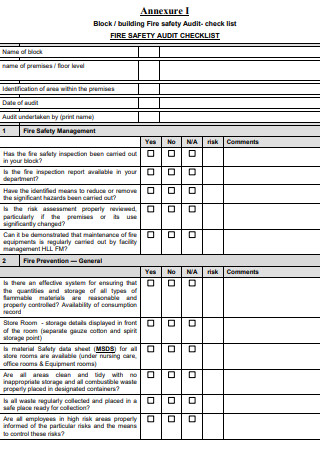
Fire Safety Audit Checklist
download now -
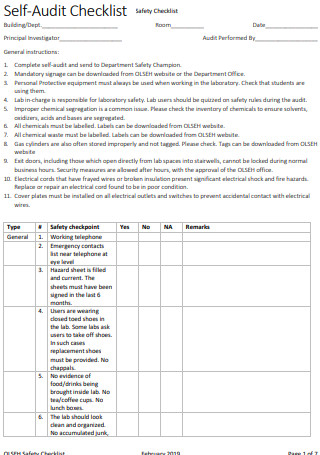
Safety Self Audit Checklist
download now -

Documents Required Safety Audit Checklist
download now -
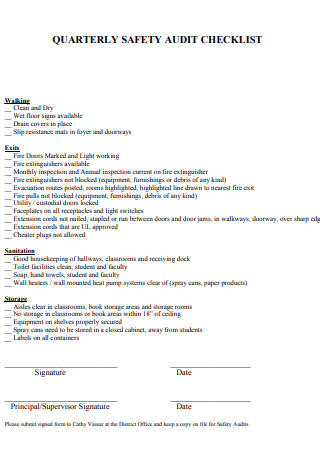
Quarterly Safety Audit Checklist
download now -
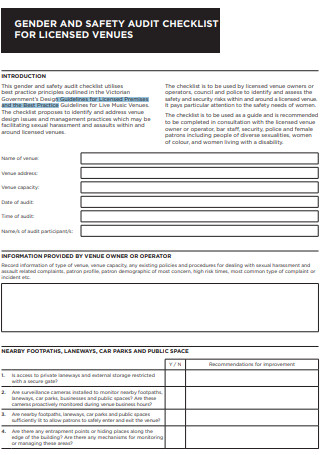
Gender and Safety Audit Checklist for licensed venues
download now -
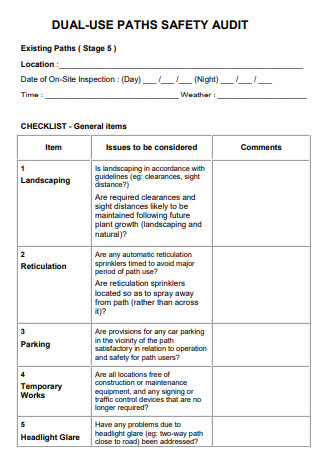
Dual Use Paths Safety Audit Checklist
download now -
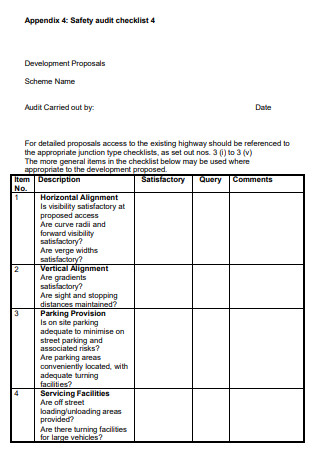
Sample Safety Audit Checklist
download now -
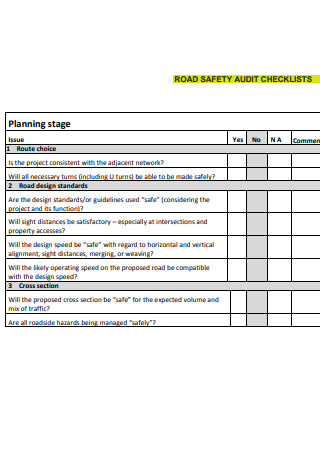
Road Safety Audit Checklist
download now -
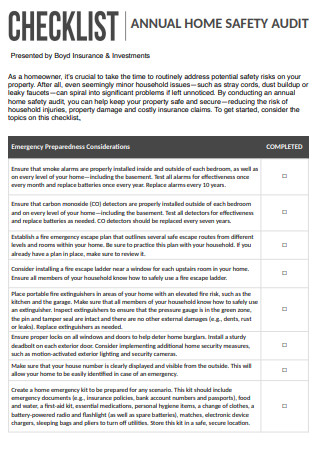
Annual Home Safety Audit Checklist
download now -
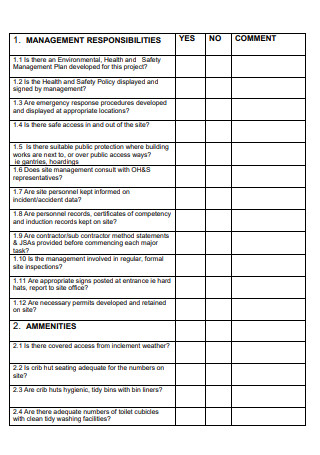
Health And Safety Audit Checklist
download now -
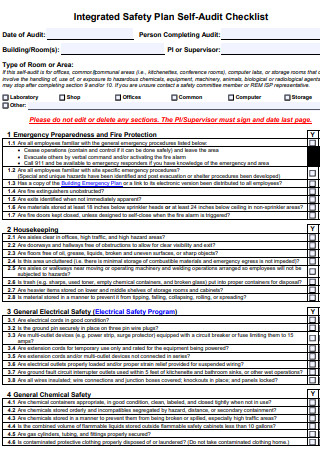
Integrated Safety Plan Self Audit Checklist
download now -
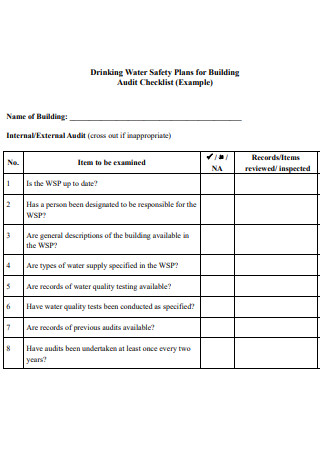
Drinking-Water Safety Plans for Building Audit Checklist
download now -
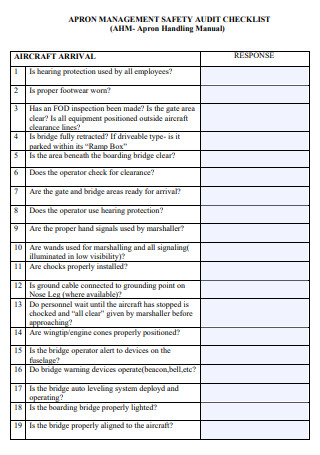
Apron Management Safety Audit Checklist
download now -
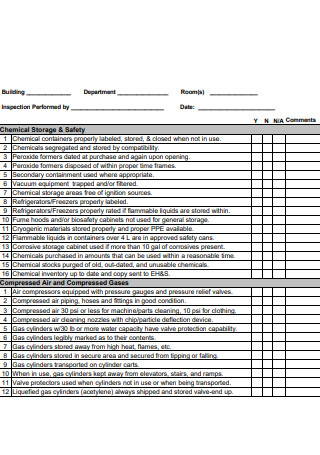
Workplace Safety Audit Checklist
download now -
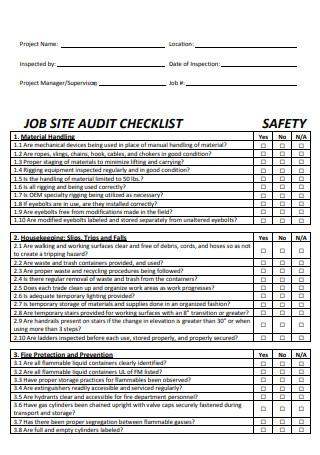
Jobsite Safety Audit Checklist
download now -
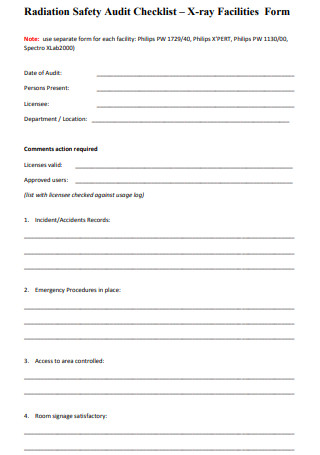
Radiation Safety Audit Checklist
download now -
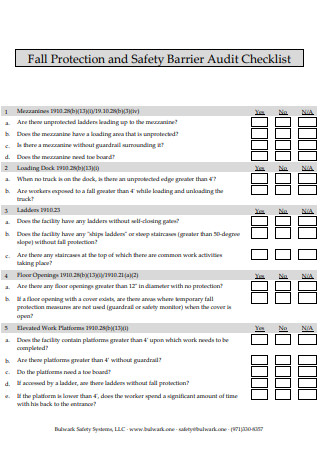
Fall Protection and Safety Barrier Audit Checklist
download now -
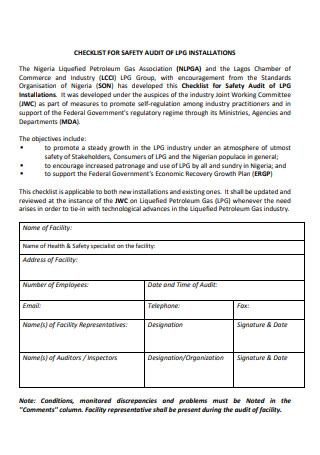
Checklist For Safety Audit on LPG Installations
download now -
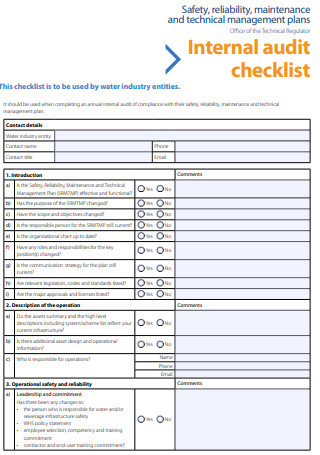
Internal Audit Checklist for Safety, Reliability, Maintenance
download now -
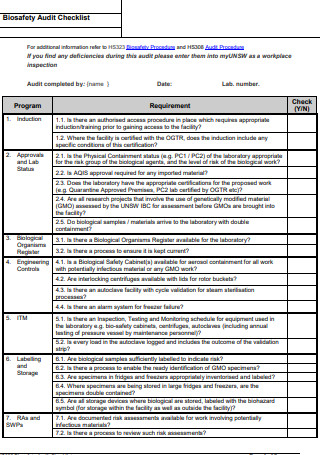
Biosafety Audit Checklist
download now
FREE Safety Audit Checklist s to Download
33+ SAMPLE Safety Audit Checklist
a Safety Audit Checklist?
Elements of a Safety Audit Checklist
Benefits of Safety Audits
How To Conduct a Safety Audit
FAQs
What is a checklist for safety inspections?
What is the purpose of a daily safety checklist?
What do inspectors of health and safety look for?
What Is a Safety Audit Checklist?
A safety audit is a systematic process for gathering information about an organization’s overall health and safety management system‘s performance, efficacy, and reliability. A security audit evaluates an organization’s security programs and procedures. This type of audit is conducted for two primary reasons. The first step is to determine whether the organization complies with applicable health laws. These activities can be carried out by members of a regulatory body or by the business itself. The second application of this audit is to identify weaknesses in safety programs and processes. Additionally, the audit can serve as a guide for developing safety plans for the entire building. According to a recent OSHA poll, 60% more businesses do voluntary self-audits of safety and health conditions than in 1981. As a result, these audits are conducted by more than 85% of companies.
Elements of a Safety Audit Checklist
A successful safety audit demonstrates that the business has a safety program to prevent incidents and minimize employee safety risks. Most importantly, as shown by the audit plan and program, “in place” refers to policies and procedures that have been tested, trained, and shown in practice. This article will discuss safety audit procedures in general. The following elements serve as a management overview and structure for developing an effective safety audit.
Benefits of Safety Audits
An audit is a method that you can use to determine workplace compliance. Safety audits may be optional or mandatory under OSHA. The facility conducts a voluntary audit to determine compliance status or to detect any suspected concerns. However, audits may be required if they are part of the settlement of an enforcement action brought against your company by a government agency. If you’re still not persuaded, here are some further advantages.
They draw attention to potential issues.
If difficulties exist behind the scenes, they might result in accidents and other undesirable outcomes for a corporation. The sooner you recognize and handle these issues, the more prepared your organization is to support its clients.
They bolster your business’s credibility.
If you are bidding for clients or investigating new business, you will discover that most companies require you to have adequate health and safety processes in place. Positivity in public relations as a result of this will ultimately enhance your commercial objectives.
They help you save money.
A health and safety audit conducts a thorough examination of practices and recommends fact-based adjustments for implementation. This will prevent you from squandering money on what may be little more than educated assumptions concerning procedures and employee benefits areas such as sick leave. Research shows that individuals save for future expenses such as a significant purchase and sign investment contracts in school or a business, and their own needs in old age or the event of an emergency. Alternatively, if they are faced with imminent expenses, they may choose to borrow. In 2017, 48% of adults worldwide reported saving or setting away money in the previous 12 months. Adults in high-income economies saved 71% of their income, while just 43% did so in low-income economies.
They assist you in adhering to the law.
Different regulations and legislation are in place to safeguard the safety of workers in various industries. If you violate these laws, you risk getting difficulty with the authorities and possibly shutting down your business. Having the necessary standards in place and minimizing the risk of workplace harm will eventually benefit both you and your employees. Additionally, the audit process can be used to demonstrate your company’s dedication to compliance.
They will provide information and validation.
Third-party audit firms benefit from their experience conducting audits in various environments and sharing best practices that can help strengthen individual programs. Additionally, the industry-wide knowledge held by a third-party provider can serve to validate existing programs and make recommendations for growth or change as needed.
They have the potential to reduce your company’s impact.
Internal audits can be time-consuming and labor-intensive, detracting from the primary business function. A third-party auditor can enter a place only to perform an audit and complete the audit and records suitably and efficiently without interfering with the company’s operations.
How To Conduct a Safety Audit
Audits of safety are critical to the success of any enterprise, regardless of its nature. Safety in the workplace affects productivity, employee morale, and overall sustainability. While the specific processes and details of each safety audit vary according to a variety of conditions, the following concepts apply to all good safety audits regardless of industry:
Step 1: Ascertain that the checklists and templates for safety audits are appropriate for your use case.
Different organizations must adhere to a variety of processes, workplace layouts, and safety laws. While ready-to-use safety audit templates are available for free download, it is generally best to adjust them to your specific use case to enhance efficiency and effectiveness.
Step 2: Conduct a compliance check on your safety audit procedure.
A compliant safety audit procedure takes precedence over an effective safety audit procedure. Before releasing your safety audit procedure template or checklist to the remainder of your auditors, ensure that it includes all necessary checks to ensure compliance with applicable safety audit standards. Safety officers must be familiar with applicable OSHA laws and regulations for organizations located in North America to tailor audit templates to incorporate all necessary checks and inspections. Research shows that internal audits can be undertaken daily, weekly, monthly, or annually, depending on the circumstances and timetable best suits a business’s needs. Audits are instruments that management should utilize to examine their organization and each department comprehensively.
Step 3: Schedule safety audits and establishes criteria for performing safety checks.
Once you have the tools necessary to conduct adequate safety audits, the next step is determining when and how frequently to employ them. By and large, the depth of your safety audits affects the frequency with which they must be conducted. Certain businesses choose a thorough annual safety audit, while others may opt for a less thorough quarterly safety inspection with an inspection report. Safety audits should also be run ad hoc whenever a new procedure, piece of equipment, or tool is introduced into an existing system. This guarantees that safety practices be adjusted as necessary, hence sustaining overall workplace safety.
Step 4: Be specific
Effective safety audits provide information to teams, enabling them to develop effective control measures against risks and hazards. Safety auditors would be wise to be as specific as possible in documenting results from routine and ad hoc safety audits. Utilizing safety inspection software lets you take images and mark them during the audit results in a more thorough report simplifies team communication.
Step 5: Maintain the confidentiality and security of your safety audit data.
Modern safety inspection applications enable businesses to reduce their reliance on safety contractors and third-party auditors in favor of doing internal safety compliance inspections with their in-house experts. Internal safety audits can provide businesses with the extra benefit of data report and security via cloud storage, allowing for special permissions that restrict access to audit data to authorized individuals. According to the State of Consumer Data Privacy Survey, only 21% of respondents trust established multinational brands to protect their personal information. This lack of confidence in large corporations may explain why nearly a third (31%) of consumers indicated they actively watch the news for any potential data breaches. However, 64% of respondents indicated that they are relatively inclined to share personal information with an app in exchange for more relevant, tailored, and convenient services. The vast majority of respondents (83%) indicated that they are somewhat comfortable with applications and services using or keeping biometric data.
FAQs
What is a checklist for safety inspections?
A safety checklist is a tool that enables managers to gain a holistic view of safety procedures, behaviors, and observable dangers throughout a facility or department. The list serves as a reminder to staff regarding which places to inspect and which details are critical for safety.
What is the purpose of a daily safety checklist?
A daily safety inspection checklist assesses critical workplace health and safety hazards that may arise daily. This checklist assists you in maintaining constant vigilance over everyday work conditions, incidents, and compliance with safety standards for people, processes, and machinery.
What do inspectors of health and safety look for?
The inspector will examine how you ensure the health and safety of your employees and anyone else who your work may impact. Additionally, they may offer health and safety advice or guarantee that you provide enough welfare amenities, such as running water and toilets.
Managing safety audits takes time and effort, but the findings are worthwhile and can propel a firm to the next level in terms of health and safety. Additionally, audits can result in proactive safety modifications that prevent employee injuries, disease, and death. Audits of workplace safety systems are conducted to determine whether they are running correctly and efficiently. By and large, workplace injuries and accidents occur due to minor errors that could have been recognized sooner through workplace safety assessments. As a result, these assessments benefit both people and companies by lowering injury rates and operating and tracking expenses while enhancing productivity.
